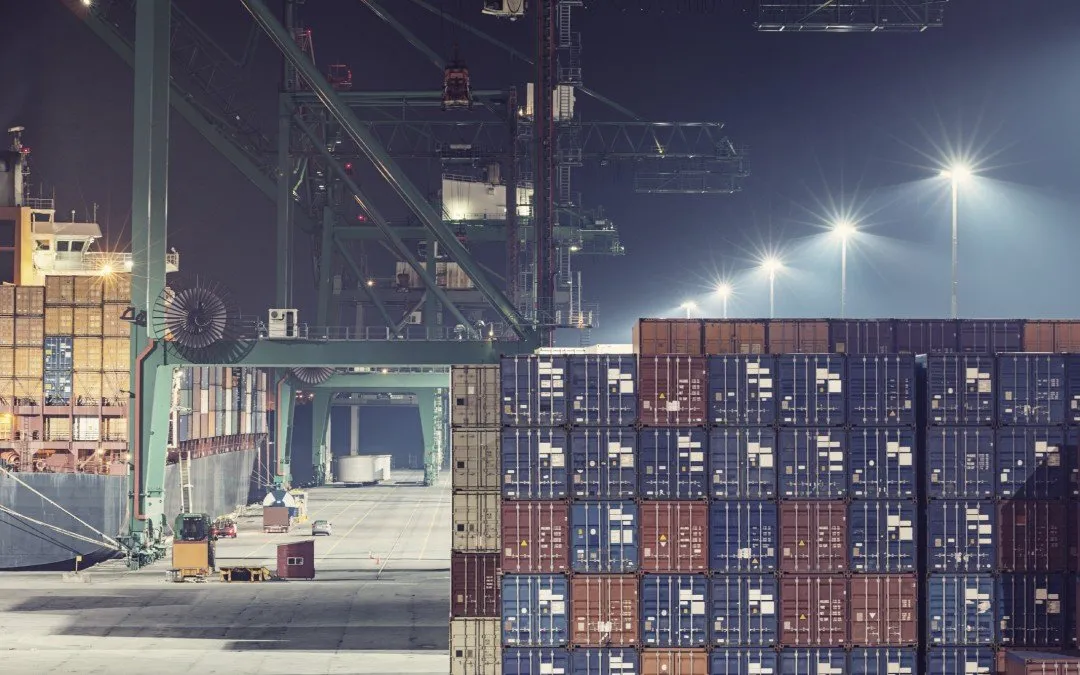
Verified Gross Mass (or VGM) is one of the hundreds of terms you will encounter in container shipping and managing logistics. It’s also one of the more recent, after being introduced in 2016 (more on that later!)
What is the meaning of VGM in shipping?
Verified Gross Mass (or VGM as it may appear on shipping documentation) is the total weight of your cargo, the container it’s in, and all the packaging, dunnage and palettes involved with transporting it safely. Read below why it’s an essential part of the shipping process to be aware of.
Why do you need to report Verified Gross Mass?
The International Maritime Organisation introduced the reporting of VGM in 2016 as part of the International Convention for the Safety of Life at Sea (or SOLAS). Reporting the VGM is crucial as incorrect weight declarations have resulted in accidents on board in the past. Incorrect weight declaration can compromise the safe transport of containers at sea and put the life of seafarers at risk.
You may think, indeed the weight of a handful of palettes can’t unsettle a ship that weighs thousands of tonnes? But when you consider that the average vessel carries between 10,000 and 21,000 TEU containers – that’s a lot of palettes and equipment that weren’t being accurately considered pre-2016.
By reporting VGM, you are helping carriers to reduce the amount of undeclared weight and have better stability calculations – reducing the potential risks to safe navigation. It also ensures your cargo is handled correctly on its journey!
Who is responsible for reporting Verified Gross Mass?
The shipper, named in the shipment’s Bill of Lading, is responsible for measuring and reporting the VGM of the container to the carrier and port terminals well in advance (at the latest before the VGM deadline) of loading on the vessel.
How do you calculate the Verified Gross Mass?
There are two ways to calculate the Verified Gross Mass of your container. When shipping with Evergrand, the shipper must either calculate the VGM or ask its driver to pass by a weighing facility.
Method 1:
The first method for measuring VGM involves weighing the packed and sealed container with your cargo inside, using a calibrated and certified weighing bridge. These weighing stations can be located at port terminals or outside ports.
A note on this method is that if the container is weighed along with the road vehicle – which it quite often will be to get the cargo on the bridge, weighed and on the move again – then the weight of the truck and its fuel should be removed from the total weight.
Method 2:
The second method for measuring VGM involves adding the weight of all cargo items and contents of the container (that’s your packing, pallets, securing equipment) to the container’s tare weight (or total weight without contents). It is shown on the container’s safety approval plate (or CSC plate). This is printed on the side of the door of the containers in most cases.
The method you choose to determine the VGM of your cargo will depend on your circumstances, but the most important thing is that it is accurately reported. For example, the weighing equipment (whether a weighing bridge or scale/lift) must meet the local country regulations and standards.
Many countries provide a 2-5% buffer on the VGM to account for the minor changes in weight from wear and tear on a container’s journey or the potential changes to cargo weight based on evaporation or humidity.
When and how do you report Verified Gross Mass in logistics?
As noted, the shipper is responsible for reporting the VGM. The shipper will usually prepare and pack the cargo – before weighing it or calculating the weight using one of the two methods mentioned previously.
From there, SOLAS provides the guidelines for the shipper to provide the VGM in a ‘shipping document’, either as part of shipping instructions or a separate communication. This must be done in good time before vessel loading (the latest before the VGM deadline).
If you’re using Evergrand as your logistics provider, you will be prompted to log the VGM details in kilos as part of the shipment process. This information is then available to port terminals and operation teams. We provides a VGM deadline indicating when you need to submit the details. You will also get an automatic reminder to submit the VGM. If you miss this reminder, our Customer Support team will remind you to submit the VGM and mention the deadline. If you face any challenges with submitting the VGM, you can check our dedicated VGM FAQ to find more information on how to report it.
Finally, the vessel operation team then uses the VGM information and the thousands of VGM measurements from other containers to safely plan the cargo loading and distribution.
What happens if you don’t report the Verified Gross Mass within the deadline?
If you miss the deadline on reporting the VGM, your cargo won’t be loaded and it can further lead to additional costs (e.g. freight costs, storage, demurrage, etc.) as a result of the container not being loaded on the intended vessel.
What to take away from this article
Reporting VGM is a key part of the shipping process. Your cargo won’t be loaded without it – and inaccurate reporting could result in fatal accidents.
The ‘shipper’ listed on your Bill of Lading is responsible for reporting the VGM of your cargo.
By reporting VGM accurately and on time, you ensure your cargo has the best chance to get loaded, as missing containers will stay on the ground.




















